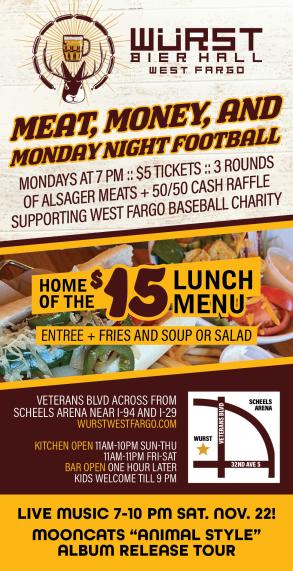Culture | June 15th, 2021
By Michael M. Miller
michael.miller@ndsu.edu
17 June 2021
The Lehr Tabernacle near Lehr, N.D., celebrates its 100th Centennial with events on June 18-20, 2021.
The Tabernacle, also known as Prairie Bible Camp, was featured in an article in North Dakota Horizons, Spring 2017, “Lehr Tabernacle on the Prairie,” written by Ronald Vossler, native of Wishek, N.D. “During a half century and beyond, evangelical farm families, mostly Dakota Germans, crowded the Tabernacle, which was built to seat 1,500. Crowds of 2,000 were not uncommon, and once at least 7,000 worshippers stood 12 deep at the door of the Tabernacle, straining to hear the sermon and the song.
The original gatherings stretched over two weeks, including three Sundays, with families living together in tents or small cabins. They cooked on kerosene stoves, and prayed their German prayers. The heart of the Tabernacle service was the communal prayer, when people knelt on sweet-scented straw that lay thick on the earth floor, which raised dust as attendees sought their seats.
The communal prayer was a gathering of voices that rose and fell for a long time, a veritable Babel of various Germanic dialects, English and a mix thereof. Songs at the Tabernacle shifted over time, from old standbys that were not liturgical, like “Gott ich die Liebe” and “So Wie Ich Bin.”
Harry Ruff was eight years old in 1941 when he went to the Tabernacle for the first time. Harry shared, “I always liked the singing and the preaching. They preached until they were done, sometimes they were long-winded. Sunday services were all day long and camp meetings would be for two weeks. On Sunday, there would be church, followed by potluck, and then another church service that usually ended around 4pm.”
Ila Rae Reich of Eureka, S.D., attended the camp with her mother beginning in 1939, when she was two years old, until her senior year in high school. Ila again attended the camp from 2000 until 2021. She was a member of the 2008 Journey to the Homeland Tour.
Ila Rae wrote, “I love the Tabernacle for its memories, my childhood, my youth, and the comfort in my aging process. Only in North Dakota can one find a yearly contentment for the soul...the Lehr Tabernacle. I remember the large crowd with the ladies wearing hats, men wore white shirts and suits and ties, and children running around. The windows of the Tabernacle opened wide for air circulation and sitting on straw bales, on a dirt floor. There were picnic lunches after church on Sunday, and blankets were spread out on the green lawn. We had fried chicken, lukewarm coffee with milk in the thermos, and pie for dessert. With a mass choir where all the voices were welcome, the music rang out to cover the whole land. The services on Thursday were held in German, with Holy Communion. Flowers and plants were placed on the altar in memory of past family members.”
Rev. Joel Winckler, Northwest District Superintendent, Dakotas Conference of the United Methodist Church, Mandan, N..D, wrote, “I attended the camps at Lehr until my senior year in high school in 1984. Through those camps, I grew in my faith and acquired wonderful Christian friends in North Dakota.”
Carolyn Schott of Seattle, Wash., with ancestry in the Fredonia/Kulm area, wrote an article about the Lehr Tabernacle for the Bessarabian Newsletter. Schott wrote, “The Lehr Tabernacle claims a special place in the hearts of those who participated in the annual summer camp meetings held there. The services in German were a reminder of the faith that had carried them from the Black Sea to the Dakota prairies. The time of fellowship and community was important for those often isolated by hard work or long winters on farms far distant from each other.”
The idea of holding camp meetings in the area started sometime after 1915. The first camp meeting in Lehr occurred in 1921 and was held next to the old Evangelical church in town. In 1921, the Evangelical churches of Lehr, Streeter, Wishek, Linton, Napoleon, Kulm and Ashley formed a German Camp Meeting Association. The Lehr Tabernacle was built in 1922, and old-fashioned evangelistic tent meetings were held each year for a week or longer. These meetings drew people from Evangelical churches all over North and South Dakota.
The land for the Tabernacle was provided by Jacob Nagel from his tree claim (similar to a homestead claim) providing a wonderful wooded piece of land for this structure. The construction was done primarily by local German-Russian farmers. The women of the churches also contributed by providing noon meals and two lunches per day for the workers. Each construction day began and ended with prayer for this work.
The Tabernacle is octagonal. Originally it had dirt floors covered in straw and provided bench seating for about 1,500 with just one center aisle. Some accounts also mention sitting on straw bales covered with blankets. Later a cement floor was laid and pews from local churches installed. Seating was expanded to hold 2,500 people. Initially the back of the Tabernacle included four small bedrooms for visiting pastors. The grounds included a kitchen – only a tent at first, but later a real kitchen building was constructed. Dormitories were built, and in the late 1960s the camp was connected to the Lehr city water system.”
Rosemary (Fichter/Doll) Hauff writes in the Lehr Centennial history book, “The Lehr Tabernacle setting in rural North Dakota certainly cannot be considered as ordinary. To be standing intact after one hundred years of severe summer winds, hail, tornadoes, droughts and floods, heavy snows, and bitter cold temperatures, is a sign of God’s grace surrounding us. Many of the people living in the communities that were building the Tabernacle were first generation Americans. They did not speak English, as evidenced by the written German history of the Tabernacle, the words and lettering, and the long history of German services.”
_______________
The centennial book, “100 Years of Lehr Tabernacle,” and the cookbook, “100 Years of Faith and Food,” are available by contacting Rosemary Hauff – rosemaryhauff@yahoo.com.
For more information about the 24th Journey to the Homeland Tour to Germany and Ukraine, donating family histories and photographs, or how to financially support the GRHC, contact Michael M. Miller, NDSU Libraries, Dept. 2080, PO Box 6050, Fargo, ND 58108-6050, (Tel: 701-231-8416); michael.miller@ndsu.edu; or go to library.ndsu.edu/grhc.
December 18th 2025
October 20th 2025
October 15th 2025
September 16th 2025
July 29th 2025
_(1)__293px-wide.jpg)
__293px-wide.jpg)
_(1)_(1)_(1)__293px-wide.jpg)


